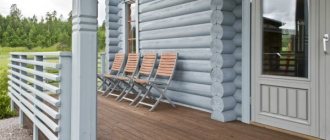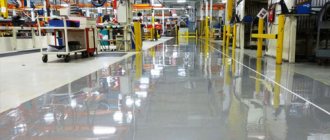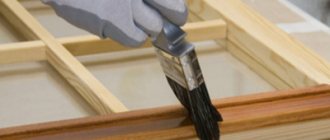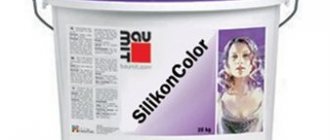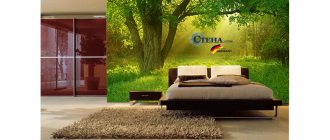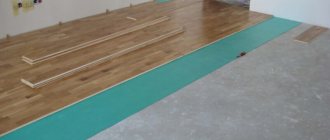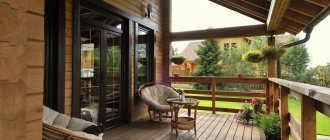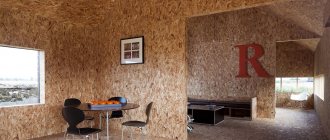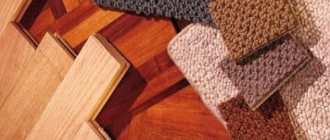Most country gazebos have a wooden floor. It has an attractive appearance, is environmentally friendly and practical. But, at the same time, this material is susceptible to environmental influences, which are especially strong in an open gazebo.
Therefore, such a floor needs a good protective coating. You will learn about how to cover the floor in a gazebo and how to do it correctly from our article.
Plank floor in the gazebo
Choosing the type of paint and impregnation
Unsplash
Wood products require constant care to maintain their good condition and original appearance. Now in the markets you can see a huge variety of products that will help preserve the tree.
Paints
Enamel
After complete drying, such products form a durable film on the surface that has its own texture.
Enamel consists of oil, solvent and resin. Thanks to the presence of oil in the composition, the enamel covers not only wood, but also metal well. Has good wear resistance. Resins make it suitable for processing any wood. This product is suitable for painting the floor on a veranda in conditions of high humidity. Even salty sea air will not harm such a surface.
In order to cover the floor with enamel, read the instructions before finishing. Keep in mind that the floor must be perfectly smooth and level. You can apply the enamel with any tool that is convenient for you.
The composition has one drawback - its service life outdoors is no more than one season. It will begin to crack and chip, after which you will have to completely renew the decking.
Acrylic paint
The composition includes acrylic resin and polymers. Acrylic creates a durable film on the surface. The product not only has a large palette, but also has good resistance to friction.
Polyurethane
It consists of dye, solvent, polyurethane. The viscous composition provides dense coverage and high protection for wood.
Alkyd
It also has a resin base with the addition of glycerin. The composition dries quickly and forms a durable and elastic surface.
So, how to paint a wooden floor on an open veranda? You can choose any one; all of the listed types are suitable for open surfaces.
Protective impregnations
Varnish
This mixture can be called one of the most capricious. Varnish is needed precisely when it is important to maintain the smoothness and strength of the wood.
For the floor, it is better to choose a varnish based on polymer resins. However, due to changes in temperature, as well as weather conditions, it will still begin to crack and break off from the surface within a year or two.
Oil (wax)
This is the most popular type of wood flooring treatment. The substances are rubbed into the floor and saturate it. They do not form any films, but on the contrary, they oil the wood, emphasizing its entire structure.
When choosing a composition, it is important to focus on what type of wood you are going to cover. On the labels you can immediately find the application method that is suitable for a particular wood.
Both products can be called universal, since they are suitable for almost any wood and are intended for outdoor use. But if you want to preserve the texture of wood, it is better to choose oil. If the durability of the coating is your priority, your choice is varnish.
- Vacation home
How to paint a veranda at the dacha: step-by-step instructions and 30 photos for inspiration
Functions of wood preservatives
The presence of wood in the interior always gives the room coziness and plays a significant role in increasing comfort, since it has a beautiful natural structure.
Wood species used in construction have the following qualities:
- High strength due to fibrous structure.
- High thermal insulation characteristics.
- Possibility of repairing or replacing damaged material.
- Ease of processing.
- Low cost . The price of untreated wood is significantly lower than other types of flooring.
The main advantage of wood is its naturalness, which at the same time has a number of disadvantages such as:
- The softness of the material, which wears out during active use.
- Exposure to moisture.
- Changes in size and disruption of structure under the influence of the sun and temperature changes.
- High flammability.
- Favorable environment for the growth of mold and fungal bacteria.
Important. Before creating a wooden floor for a gazebo, the wood used must be subjected to additional processing with various means that increase the physical characteristics of the material and protect it from harmful effects.
Preparatory work for painting the floor on the veranda
Pexels
Before proceeding with the design, the coating must be carefully prepared. After all, good wood processing will ensure its strength. To ensure that the base lasts a long time, we recommend that you follow several steps.
Sequence of work
- Remove worn covering. Even the most durable paint and varnish will not be able to transform a cracked layer of old varnish. This also applies to boards. If you notice problem and rotten areas, they need to be replaced. This way you can avoid unpleasant moments when the boards break or begin to creak heavily.
- Check the waterproofing and water drainage system.
- Sand the surface. Here you need to remove the dark layer of the array, which has been subjected to mechanical stress for a long time. You need to sand the material until you see its natural color. We recommend using a special device. This will ensure your floor is treated evenly. For hard-to-reach areas, use special attachments or light sandpaper.
- Carefully remove all debris generated during rough work. Next you can start painting.
- Floor
Detailed instructions for sanding a wooden floor yourself
Required Tools
The quality of the final coating directly depends on the choice of tools. For work you will need:
- Planer, sandpaper or sander
- Antiseptic impregnation
- Primer mixture
- Paint and impregnation
- Brushes of different sizes
- Roller
- Floor
Quick Redesign Idea: How to Paint Floors
What qualities should the coating have?
Terraces can be covered or open, located on the ground or on a foundation. Sometimes for the winter or in bad weather they are closed with sliding or soft windows or other decorative enclosing structures.
But these are, as a rule, unheated rooms in which people wear outdoor shoes. Therefore, the terrace floor experiences all the hardships of our harsh climate and considerable mechanical stress. Based on these conditions, the basic requirements for coating can be determined.
When deciding what to cover the terrace with, you should focus on materials with the following characteristics:
- High frost resistance and low water absorption. Any material is destroyed in the cold if water gets into its pores and freezes;
- Abrasion resistance. Usually the terrace is the most accessible place in the house, along with the porch and hallway. The floor material must have wear resistance class 4 or 5;
- Strength. The coating, which is subject to constant mechanical and atmospheric loads, must withstand them without loss of strength, otherwise it will have to be changed frequently.
Note. This requirement applies not only to the floor covering itself, but also to the base on which it is laid.
- Moisture resistance. Under the influence of moisture, the material should not rot, swell or deform;
- Anti-slip properties. They are a guarantee of the safe movement of people, especially in the winter season.
Additional requirements include resistance to fading under the influence of sunlight, ease of cleaning the surface from dirt, maintainability, and an affordable price. Decorative qualities are also important - color, texture, shape of the flooring elements. But when choosing what to make the floor from on the terrace, you should not give them a primary role.
Requirements for terrace flooring
When choosing the optimal material for the floor on the terrace, the average buyer first of all pays attention to the price. Is it worth overpaying? Maybe buy it cheaper? All these arguments are not serious. The flooring must be of high quality and suitable for aesthetic purposes. In this case, it is better to relegate the issue of price to the background.
The next selection criterion is ease of installation and subsequent care. In this case, it is worth studying the technology of laying each material, and, in the case of self-installation, choosing a less labor-intensive coating. However, as in the issue of price, you should not refuse the coating you like just because you are not able to carry out the construction work yourself. Such sacrifices, as a rule, do not lead to anything good.
In addition to the requirements discussed above, the floor on the terrace must have the following basic characteristics:
- High frost resistance (due to the predominant presence outside heated rooms). Materials with this characteristic have a low water absorption rate - no more than 3%. The virtual absence of moisture impregnation allows the coating, when freezing, not to be subject to the destructive forces of expanding ice (cracking, peeling, deformation).
- Moisture resistance. This characteristic is closely related to frost resistance. However, in addition to expansion at sub-zero temperatures, an abundance of moisture on the floor in the warm season can lead to rotting of the material (important for wood) and the formation of fungus and mold.
- Durability and low abrasion. The higher these indicators, the longer the terrace floor will last and retain its natural appearance. The minimum abrasion class for terrace materials is 4.
- The coating should not be slippery. In conditions of wet or icy floors, this characteristic is especially important to ensure safe movement.
- UV stability (resistance to ultraviolet radiation). Materials with low protection from ultraviolet rays in the absence of proper protection (awnings) from sunlight can reduce the color intensity of the coating over time.
Having considered the basic requirements for covering a terrace, you can move on to a direct review of the materials available on the market and highlight the advantages (disadvantages) of each.
Painting technology
Application of protective compounds
Before applying paints, the floor must be protected from moisture and pests. Usually special liquids, primers and antiseptic impregnations are purchased for this. They are very important and perform special functions:
- Makes the material fireproof
- Bleaching
- Prevents the spread of fungus and insect infestation
- Reduces the consumption of the base coating
- Increases resistance to damage
We advise you to buy such solutions from the same company as the paint for the floor on the open veranda.
Drying time for the protective layer is at least three days.
Applying paint
Pexels
The application of dyes is carried out in several stages. You need to ensure that each layer is very thin. Ideally, the coating should consist of three layers. Floor paint on an open veranda is applied with a roller or a wide brush and done along the boards, not across. Otherwise, the substance will accumulate unsightly between the boards. The sides and hard-to-reach places are treated with a small brush.
Dry the paint for 3-5 days. If the boards are completely new and this is the first coating, then drying can last up to a week.
After you have applied all the layers and dried them thoroughly, the floor should be rinsed with hot water.
Impregnation coating
After the coloring composition has dried, we begin impregnation. Depending on the choice (oil or varnish), the product must be mixed. Read the instructions carefully, as some types of oils require dilution; with varnishes it’s a little easier. Next, use a wide brush to paint each board, paying special attention to the joints and ends.
It takes a day to dry the first layer. After which the application of the composition must be repeated.
Conclusion
A do-it-yourself plank floor in a gazebo requires the application of a protective coating that would prevent the wood from rotting. It can be various antiseptics, paints or varnishes.
There are a number of popular protective compounds. These are wood medicine, biosept, aquatex, elcon and others. Their validity period is no more than 10 years.
More durable is floor treatment using imported products: TIKKURILA, Dulux, ALLICATOR. But the cost of such compositions is significantly higher than that of their Russian analogues.
The video in this article will help you find out more information on this topic. In addition to this, you can find other useful materials on our website.
Useful tips
If you are laying down new boards, choose hardwood. The soft ones will quickly wear out and peculiar bedsores will form on such a floor. Hard varieties are more expensive, but they can be called stronger and more durable. If you want to give the wood a special texture, use a stain before applying oil.
When choosing what color to paint the floor on the veranda, pay attention to the color of the stairs and railings near the house. If you have already put together the entire image of the veranda in your head, you can choose a shade to match the color of the furniture. We advise you to choose calm and not flashy colors that will help you relax and enjoy nature.
To prevent the boards from deteriorating due to temperature changes, cover them with thick polyethylene when winter comes. And to avoid slipping and injuries during rain, lay rubber mats with holes.
Put special silicone caps on the legs of furniture that you place on the veranda or glue felt pads. This measure will prevent scratches.
What type of coating should I choose for my decking?
Experienced craftsmen advise owners of private houses to use special oil to cover decking boards. This is a universal, durable material with a high degree of protection. Oil is considered an environmentally friendly product. It is safe for human health, since only oils of natural origin are used in the composition.
Among the benefits that speak in favor of the oil are the following:
- the board acquires a matte finish and natural shine, highlighting the beauty of the texture;
- the material does not crack or dry out under oil, since it can “breathe”, that is, absorb and release moisture;
- Thanks to the presence of special additives, it is easy to buy tinting oil, formulations with waxes or mixtures to reduce surface slip.
The oil guarantees a high degree of ultraviolet protection. Dirt from the oil-coated decking is easily washed off with water pressure. At any temperature, the coating retains high elasticity. Oils with colorants emphasize the structure of wood, and the material looks more expensive and respectable.
The problem of open terraces
A terrace is an open space exposed to constant temperature changes, harmful ultraviolet radiation, precipitation and abrasives that get there on the soles of rough street shoes. That’s why the boards there have to be changed often. For some summer residents, replacing floors on the terrace has completely turned into an annual “entertainment”. And no amount of correct laying of boards will save the situation.
No matter how much you make gaps between them, ensuring the outflow of moisture and ventilation, unprotected wood will probably not rot as quickly as on those floors where the owners completely neglected building codes, but it will still happen.
Obviously, this cannot be done without a paint coating. Just what exactly should you buy? After all, the problem today is not a shortage, but rather an oversupply of such products, which has literally flooded the market. Dozens of brand names, hundreds of offers from unknown companies.
And everywhere there is advertising, advertising and advertising. It’s easy for even a professional to get confused here, let alone the average summer resident. But you not only need to think about how to cover the floor on the terrace, but also take care of the proper preparation of the wood before processing.
Features of operating a terrace or open veranda
Usually the terrace is located at the entrance to the room, so it is used constantly. In the warm season, people are on the terrace almost from morning to evening. Quite often, this part of the home serves as a hallway connecting the street with the rooms, along which people walk in street shoes without taking off their shoes. This circumstance should be taken into account when choosing material for finishing the floor. It should be resistant to abrasion and not deteriorate from frequent cleaning.
The veranda is an open or semi-open room, so it experiences all weather fluctuations. These include daily or seasonal temperature changes, dew, precipitation, and ultraviolet radiation. Under their influence, the wood shrinks or swells, causing stress on the paint layer on it. The wrong material cannot withstand such loads and will crack.
Another aspect that should be taken into account when finishing the veranda is biological. Wood serves as food for some living organisms, such as molds or insect larvae. Larch, often used for cladding, is a tasty morsel for wood-boring beetles. If the boards are not treated with special antiseptic and insect repellent substances, the wood will become a target for mold and pests that destroy it.
When can you use the building and how to care for painted surfaces?
In the first weeks after painting, the top layer is especially sensitive to mechanical stress. During this period, it is recommended to avoid wet cleaning using detergents and remove dust with a vacuum cleaner or soft brush.
Sometimes owners of houses with verandas complain that the floor quickly gets dirty and looks sloppy. Experienced craftsmen recommend using varnishes and paints of dark, non-staining shades to finish the floor of an open veranda. When choosing between glossy and matte floor finishes, choose matte. It is more practical because dust is less noticeable on it.
The finish will last longer if you lay paths or rugs in a walk-through area with active traffic. To prevent scratches on the legs of tables and chairs on the terrace, it is recommended to attach rubber or felt pads.
Depending on the type of contamination, dry or wet cleaning is carried out periodically. When the veranda is not in use, it is advisable to cover the wooden floor with a film or tarpaulin, which must be removed periodically for ventilation.
As abrasion or minor defects appear, the coating is restored. To update, you do not need to re-treat the floor with an antiseptic or primer. It is enough to wash the coating well and after drying, apply a layer of varnish, paint or oil.
I hope that the material presented is quite enough to properly process wooden structures exposed to the atmosphere on your own.
Bottom line
Whichever floor covering option is preferred, you should always take into account the location of the veranda, the degree of its use, the need to install heated floors, glazing of window openings, the presence of communications, and installation features. In addition, it is always necessary to take into account the financial component when making a choice in favor of the optimal coverage in all respects. And proper installation and careful care will help it last for quite a long time, making your stay on the veranda comfortable.


